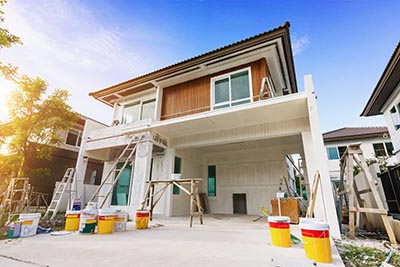
Building a custom home is a challenging journey. It’s an opportunity to construct a house that truly fits your lifestyle needs and design preferences.
Building a home requires more intensive planning than buying a ready-built one. You’ll have to be hands-on from day one of planning to the finishing touches to make sure everything goes according to plan.
If you’re planning to build your dream home anytime soon, here are seven viable tips to help you get started with a systematic approach:
1. Prepare your budget and financing
A project this big requires proper budget management and financing. Building a house from scratch poses greater financial risks than buying a home, so you have to be aware of all the details in funding.
If you have an existing property to build on and enough savings for the whole project, all you have to do is to set how much you’re willing to spend. However, getting a construction loan would help those who don’t have much disposable money.
A construction mortgage is a short-term loan that future homeowners and builders can avail themselves of to use during the construction process. The loan should be fully paid after the project or be converted to a permanent mortgage.
The next step is to know the building cost in your area. You may reach out to some local and online home construction companies to determine the cost-to-build per square foot.
2. Select your preferred location
One of the tell-tale advantages of building a custom home is the chance to select the best location. You can choose a spot with amazing views greeting you every day or somewhere near a family property.
Building a home allows customization that fits your chosen location. For instance, sloping land on a mountainside is perfect for creating an infinity pool. You can also customize the design of the home to blend in with the natural elements surrounding it.
Another factor in selecting the best location for your home is convenience. You should be ready to spend extra on the shipment of materials if you’re building it far from the city or prepare for a higher labor cost if it’s an urban area.
3. Choose your preferred architectural style
A custom home unleashes your creativity. You’re allowed to choose a specific architectural style that best fits your personality and lifestyle.
The architectural style of your home affects its aesthetic appeal and the total cost. For example, a modern industrial home with metal framing and tempered floor-to-ceiling glass walls costs significantly more than a contemporary farmhouse.
Each type of architectural design requires specific materials to achieve the look and ensure the home’s structural strength. More expensive materials, especially those you need to source abroad, demand a higher budget.
4. Specify the size of the home
Aside from the architectural finish of the home, the factor that significantly impacts the total building cost is the size. Bigger homes require a higher budget due to the number of materials and the project timeline.
For an economical choice, consider building a house with a less complicated design. For instance, a rectangular-shaped home is more affordable to construct than a house with curves despite the same floor area.
On the contrary, a small home with a high-end finish may cost higher than a large home with a simple design. It’s essential to know the total price per square foot corresponding to the house’s complexity to prepare the exact budget.
5. Determine the amenities you’d like to add
Since you’re constructing a custom home, it’s your chance to include all the amenities you’re looking for. The goal of customizing a house is to build according to your needs and wants. You can add all the features you want for your dream home.
Some of the common amenities most homeowners look for are a swimming pool, auxiliary kitchen, movie room, and home gym. These are beyond the basics but add value and convenience to a home. For example, an auxiliary or dirty kitchen is the best addition to a house with an open floor plan. You’ll have a separate space for food prep and dirty dishes, making it so much easier to entertain guests.
6. Create or modify a floor plan
A custom home allows you to create an original floor plan or modify an existing one. Each option has its pros and cons.
Creating a floor plan with the help of an architect ensures everything suits your preferences. You can draw from scratch and bring your vision to life. However, this option can take longer to finalize between you, the architect, and the civil or structural engineer.
On the other hand, modifying a pre-planned house can be a better option if you want quicker planning. You can suggest some changes to your architect to tweak the design to your taste.
7. Hire trusted contractors
Hiring a general contractor is best for busy people who don’t have a background in construction. However, if you have a construction background and spare time, you can act as the general contractor for the project.
When you hire a general contractor, they will be the one to coordinate with subcontractors for specific parts of the project. They will also handle hiring workers. All you have to do is to observe and wait. On the other hand, if you decide to be the general contractor, you’ll have to do all these things by yourself.
Keep in mind that hiring trusted contractors and subcontractors for your home build is essential to ensure quality and safety, aside from the fact that it’ll be less stressful for you.
Conclusion
Building a custom home allows turning your imagination into reality. Although it can be more time and financially demanding, the results will be more fulfilling. To achieve that, take these tips mentioned above to help you acquire your dream home in no time.
Story by Gracie Davis










